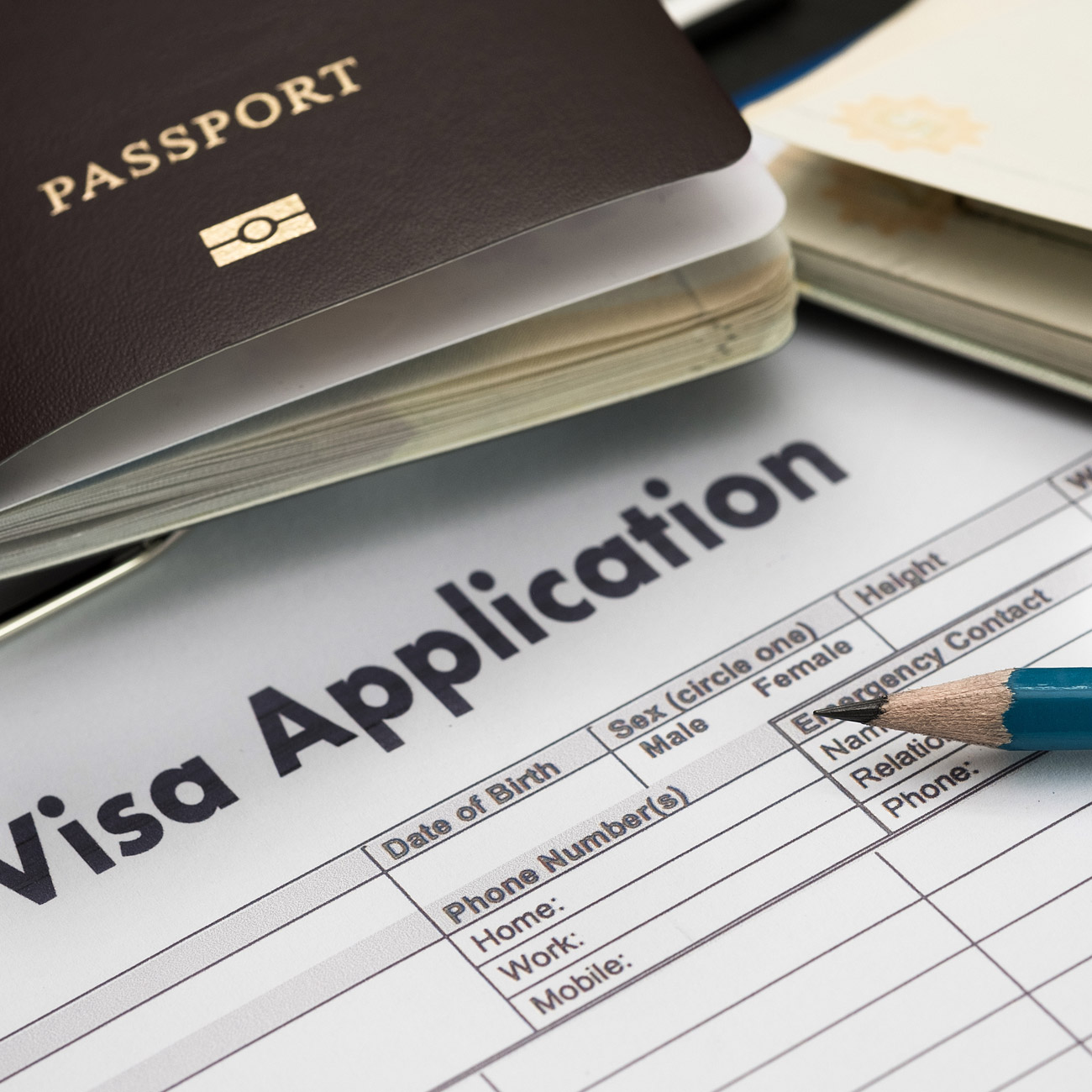What student visas are available to international students?
All international students coming to Australia need to apply for a Student visa (subclass 500). This applies no matter the type of study you’re hoping to undertake, whether it be undergraduate (like a degree program at an Australian university), postgraduate (such as a Masters or PhD program), ELICOS (for studying English in Australia) or a Vocational Education and Training course (perfect for shorter study and job-ready skills).
What do I need to know about a Student visa (subclass 500)?
A Student visa (subclass 500) will allow you to study in Australia for the length of your course (up to five years and in line with your enrolment).
After you complete your course, you’ll need to apply for a new visa if you intend to stay in Australia, or liaise with the government to gain an extension on your current student visa if you want to continue studying.
To get started, your visa application will be processed by creating an account online through ImmiAccount.
When it comes to applying for your visa, start as early as possible, to give yourself time to collect all the required documents. You should start looking at potential courses you’d like to study about four to five months in advance.
How much does a Student visa cost?
There are costs involved to acquire a Student visa. There may also be some additional costs involved in the application process, such as police and health checks, and it is important to note that this price does not include tuition fees or living expenses. Visit the Department of Home Affairs website for cost information.
What are the eligibility requirements for a student visa?
The next step in applying for your subclass 500 student visa is fulfilling all of the eligibility requirements. There are quite a few and you are going to have to be diligent and organised when going through the application process. The entry requirements for the subclass 500 student visa are:
Be a certain age
If you are of school age, you must be 6 years of age or older to apply for a subclass 500 visa. In addition:
- Students must be under 17 years old when starting Year 9
- Students must be under 18 years old when starting Year 10
- Students must be under 19 years old when starting Year 11
- Students must be under 20 years old when starting Year 12
Confirmation of Enrolment (CoE)
When applying for a visa, you must provide evidence of your enrolment in the form of a CoE from your chosen educational institution. The CoE is provided by your educational institution after you’ve accepted your offer and paid your deposit.
Make welfare arrangements (if you are under 18)
If you are applying for a subclass 500 visa and are under 18 years old, there are certain welfare arrangements you will need to have in place, including:
- Nomination of a student guardian
- A Confirmation of Appropriate Accommodation and Welfare (CAAW)
- Acceptance Advice of Secondary Exchange Student (AASES) form (if you are an exchange student in secondary school)
- Approval of your welfare arrangements from the relevant Minister (only if you are a Foreign Affairs or Defence student)
Language requirements
Depending on the course you want to study in Australia, you may need to show evidence of your English language skills.
Individual educational institutions often have a different level of English proficiency required for your student visa application, so make sure to check beforehand.
While practising your English skills using online resources is a good option, you can also find a teacher or an Australian-based centre that offers online learning.
You may need to provide test scores from an English language test or alternatively provide evidence of completed eligible English studies from the last two years. Some international students may fall into an exemption category.
Click here to see the minimum scores required to meet the English language specifications for the subclass 500 visa.
Upcoming changes to English language requirements
The Australian Government has announced that in early 2024, the English language requirements for Student visas will increase.
Not held a certain visa if applying while in Australia
If you have one of the following visas, you will not be able to apply for a subclass 500 visa while in Australia:
- Domestic Worker (Temporary) Diplomatic and Consular visa (subclass 426)
- Temporary Work (International Relations) visa (subclass 403) in the Domestic Worker (Diplomatic or consular) stream
- Diplomatic (Temporary) visa (subclass 995) – primary visa holder only. A family member of a Diplomatic (Temporary) visa (subclass 995) can apply for a Student visa in Australia
- Transit visa (subclass 771)
- Visitor visa (subclass 600) in the Sponsored Family stream or in the Approved Destination Status stream
Financial requirements
During your study in Australia it is important that you have enough money to support your stay, including cost of living, your tuition fees and travel expenses. Luckily, Australia is home to some of the most affordable student cities, such as Adelaide, so you can study and enjoy a weekend holiday or two!
The Department of Home Affairs provides a step-by-step guide to help you estimate your expenses. This should be completed before applying for a visa.
Genuine Student (GS) requirement
The GS is one of the most important aspects of your visa application - it’s the premise on which a student visa is granted or refused.
Its purpose is to ensure that all applicants applying for a student visa acknowledge that they’re entering Australia on a temporary basis to gain an education. Applicants are required to submit a personal statement that addresses the GS requirements and any questions that an assessment officer might have. In short, your GS will need to emphasise that you’re only coming to Australia with the intention to study - hence, ‘Genuine Student’. Only focus your GS statement on the visa that you are applying for.
The Department of Home Affairs provides further information about what evidence and information to include in your personal statement addressing the GS requirement.
Character requirements
All applicants must pass the character test in order to be eligible for a visa. You may be required to do the following:
- Submit a police certificate
- Fill out a Form 80 Personal particulars for character assessment
- Fill out a character statutory declaration
- Provide a military certificate
- Provide letter of recommendation from an employer
Refusal or cancellation of a visa can be permitted if you do not pass the character requirements. If this happens, you may be able to appeal the decision to the Administrative Appeals Tribunal (which reviews decisions made by the Australian Government) and the Minister can choose to revoke the cancellation. If you’re applying for a student visa from offshore, you may not have the right to a review upon refusal.
Health requirements
There are certain health requirements that you will have to meet to be eligible for a subclass 500 visa, including being free from certain diseases or conditions. You may have to have a health examination to prove you meet the requirements. For more information, seehere.
Australian Values Statement
There is a Life In Australia booklet that you will have to have read and understand - it is available here in a range of languages. You will then have to sign an Australian Values Statement to confirm you will obey Australian laws and respect the way of life here.
Debts to the Australian Government
If you or any of your family members (including family members who aren’t applying for the visa with you) owe money to the Australian Government, you’ll have to pay it back before submitting your application.
Previous refused or cancelled applications
If you had a visa cancelled or an application refused while in Australia, it may affect your eligibility for a subclass 500 visa. For more information, see here.
Best interests of a child
If the Australian Government believes that this visa is not in the best interests of someone under 18 years of age, it may not be granted.
Conditions to uphold
These are conditions that can be attached to your subclass 500 student visa, including:
- You can work a maximum of 48 hours of work per fortnight during semester (and unlimited hours during breaks)
- You cannot begin employment before your course of study has begun
- You must not engage in disruptive behaviour
- You must provide your forwarding address
Tips for Student visa applications
In addition to the above requirements, here are some handy tips that can help improve your application:
- Include a cover letter outlining a summary of all the documents attached
- Make sure all the documents and files are clearly named and certified as per the requirements
- Make sure you’re filling in the forms fully and honestly
- Always lodge a complete application (even if you’re only waiting on one more piece of certification, you need to have every piece of documentation ready before applying).
The Law Society of South Australia can provide you with further assistance if you have any legal questions.
Common mistakes on Student visa applications
One of the biggest mistakes when it comes to visa applications is oversight. In other words, you need to make sure you cover every single thing that is required. If your visa was rejected the first time around, make sure that you didn’t miss anything in your original application. Missing documents is also a common mistake – double-check you’ve included the required documentation.
You should also be prepared for anything when it comes to your visa. Interviews from the immigration department don’t always happen, but it helps to be well prepared in case they do. Your visa application is not just about writing, it’s about knowing and being fully aware of the course you want to study.
How long does it take to get a student visa?
The processing time of an application can vary and will be different for everyone. The Department of Home Affairs provides a useful tool to highlight current visa processing times.
What happens if my Student visa is rejected?
You will be notified if your student visa application has been rejected. If this happens, it’s important to move quickly and submit your application for review (if applicable).
If a review is not possible, you should look into why your first application may have been rejected. Perhaps something was missing, or you didn’t go into enough detail in answering the required elements of your GS. Rather than submitting the same application, you should look to improve on your first attempt. You can always speak to an education agent or with the educational institution you’re applying to, to see why your visa was rejected.
The information contained in this article is general in nature only and does not constitute personal advice. The information has been prepared without taking into account your personal objectives, situation or needs.
StudyAdelaide does not guarantee the accuracy of the information including information provided by third parties. Individuals must not rely on the information on this website to make decisions. Read the StudyAdelaide Disclaimer.




